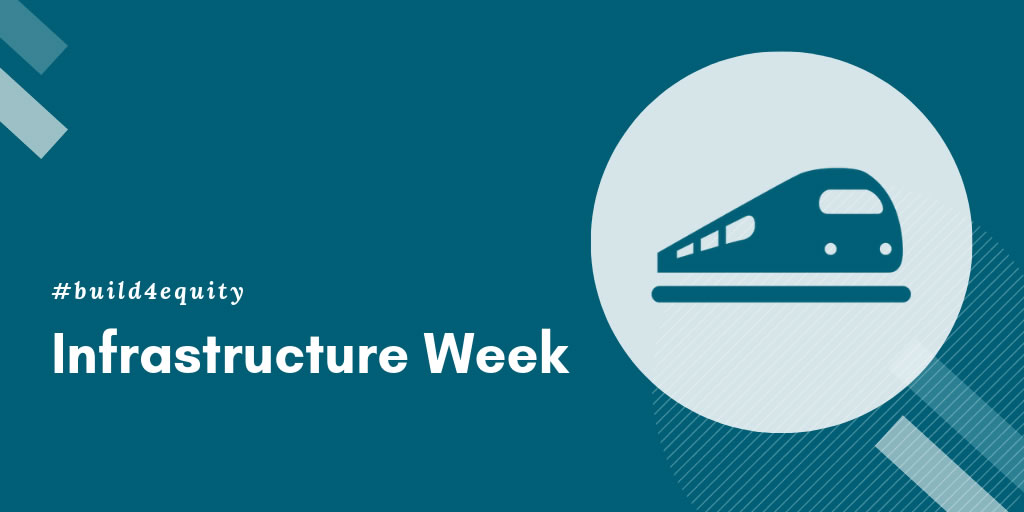Equity, Artificial Intelligence, and Transportation

May 17, 2019
From autonomous vehicles and bio-transit tickets, to airport face scanning and smart highways and cities, artificial intelligence (AI) is making its way into the transportation sector, one innovation at a time. As exciting as these technologies are, the big challenge will be to ensure that rapid innovation does not perpetuate existing inequality. Instead, artificial intelligence should be applied to providing benefits to the communities that too often have carried the negative burden of our traditional transportation infrastructure and systems without enjoying the benefits they provide.
With the growth in popularity of ubiquitous apps and services like Uber, Lyft, Amazon, Postmates, and DoorDash, companies are looking for ways to grow their client base and outdo their competition. In today’s era of convenience and efficiency, this means being faster and more automated. As companies focus on expansion and increasing their profit, we must ensure that their growth does not cause new harm to our most vulnerable communities. This means considering how artificial intelligence and automation affect the transportation systems low-income people and people of color depend on. Will new technology increase the mobility and connection of disinvested people and places or will it undermine the buses, trains, carpools, and shuttle services people depend on? Will it improve access to high quality jobs that pay fair living wages and treat workers with dignity and respect or will it leave new generations of people behind? Will it support a more inclusive society or deploy new surveillance tools and predictive policing that perpetuate algorithmic bias and propagate the wrongful criminalization of people of color?
Despite these challenges, there are clear opportunities for artificial intelligence technology to help solve the transportation issues that have negatively impacted low-income communities and communities of color for generations:
- New technologies have the potential to improve the environmental conditions of marginalized communities whose neighborhoods are disproportionately polluted due to proximity to busy highways, oil refineries, power plants, goods movement corridors, and other transportation-related pollution sources.
- According to research from Smart Growth America, pedestrian fatality rates among African Americans are 60 percent higher than among Whites. For Latinos, they are 43 percent higher than Whites. Artificial intelligence can improve transportation planning, traffic management, and the way cars respond to potential accidents. If AI is applied with the intention to increase pedestrian safety for the communities most at risk of being harmed, it has the potential to dramatically decrease accidents, injuries, and fatalities in communities of color.
- Households in the bottom 90 percent income bracket spend twice the amount on transportation than households in the top 10 percent income bracket spend each year. They also spend a lot more time commuting to their jobs. If AI can improve transit system efficiency while retaining quality service and facilitate the deployment and expansion of community owned and operated micro mobility solutions like jitneys and ride sharing this could translate into real benefits for low-income communities and communities of color.
As we think about the potential impact of AI on transportation and transit systems, it’s helpful to look to the principles set forth by the Transportation Equity Caucus, a coalition chaired by PolicyLink and composed of more than 125 national, state, and local organizations working to embed racial equity into federal transportation policy. The principles and their AI implications are:
1. Create affordable transportation options for all people. We must ensure that the cost of using autonomous vehicles (AVs) and AI technologies for daily travel is accessible for people of all income levels, particularly if they are to be an extension of the public transit system.
2. Ensure fair access to quality jobs, workforce development, and contracting opportunities in the transportation industry. As AVs other AI technologies are deployed in our cities, we must ensure that the jobs and contracts associated with their growth are high quality and are accessible to workers and firms who have historically been shut out, namely people of color and people with disabilities.
3. Promote, healthy, safe, and inclusive communities. Just like there are food deserts, there are transportation innovation deserts. Too many communities of color already lack access to quality transit services, safe pedestrian and bicycle infrastructure, and well-maintained roads. These same communities are the last ones to have access to on demand rides, bikes, and scooters. As AVs and AI technologies are deployed it is important to think about the spatial distributions of affordable transportation options and the impact they will have on the transportation services that communities of color already depend on.
4. Invest equitably and focus on results. As AI has moved into many parts of society, concerns have been raised about the lack of racial and ethnic diversity in the tech sector. Specifically, people have pointed to several incidents related to image recognition systems where unconscious racial bias showed up in tech projects. In the transportation space there is early evidence that bias is embedded in computer algorithms that should drive automated vehicle technology. Research has found that autonomous vehicles are less able to detect people with darker skin color, compared to people with lighter skin color. Facial recognition and predictive policing technology deployed through our transportation infrastructure can also perpetuate discrimination and increase police surveillance in communities that are already subject to disproportionate policing. To address this, we must be thoughtful in considering both the functionality of technology and its application and impact. We must ensure that people of color, people with disabilities, and other vulnerable populations are co-designers of the deployment of AI in our communities and cities.
The AI train is already running at full steam and there is no sign of a slow down. We can either watch it pass us by or get on and help program its direction. It is time for community leaders, advocates, and policymakers to chart a new course that will deliver real transportation equity to the millions of Americans who have been harmed and neglected by our past infrastructure investments, policies, and practices.

